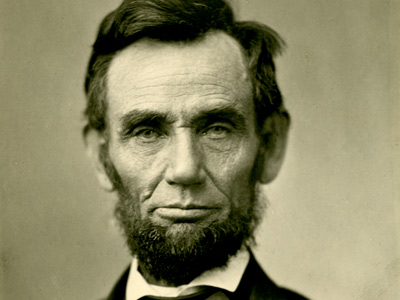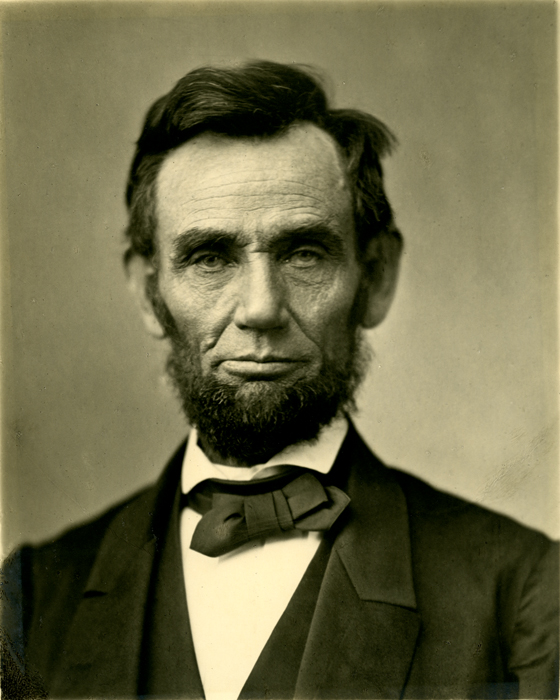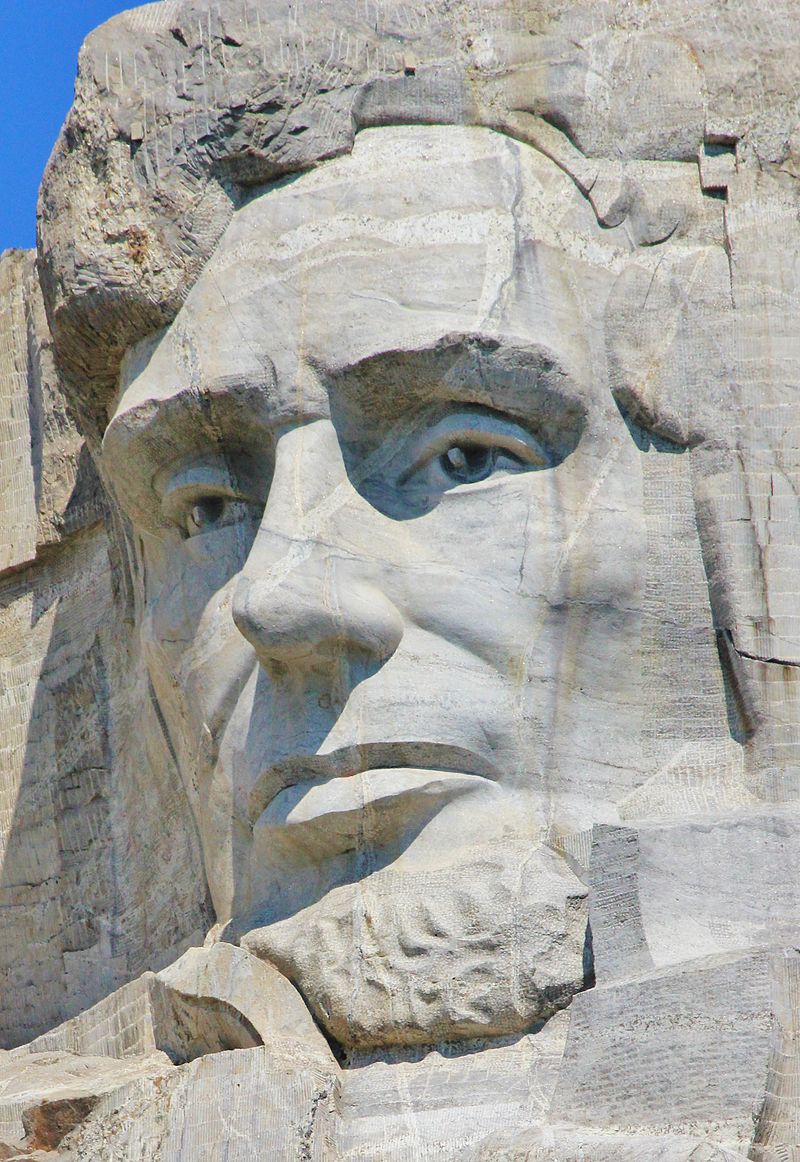Abraham Lincoln (1809-1865)
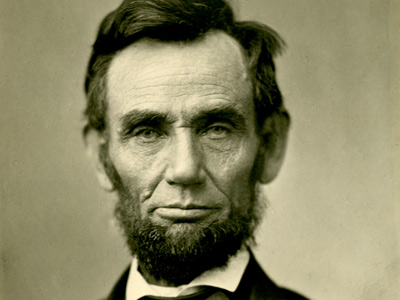
Early Life of Abraham Lincoln
Abraham Lincoln was born February 12, 1809, the second child of Thomas and Nancy Hanks Lincoln, in a one-room log cabin on the Sinking Spring Farm near Hodgenville, Kentucky. He was a descendant of Samuel Lincoln, an Englishman who migrated from Hingham, Norfolk, to its namesake of Hingham, Massachusetts, in 1638. Samuel's grandson and great-grandson began the family's western migration, which passed through New Jersey, Pennsylvania, and Virginia. Lincoln's paternal grandfather and namesake, Captain Abraham Lincoln, moved the family from Virginia to Jefferson County, Kentucky, in the 1780s. Captain Lincoln was killed in an Indian raid in 1786. His children, including eight-year-old Thomas, the future president's father, witnessed the attack. After his father's murder, Thomas was left to make his own way on the frontier, working at odd jobs in Kentucky and in Tennessee, before settling with members of his family in Hardin County, Kentucky, in the early 1800s.
Lincoln's mother, Nancy, is widely assumed to have been the daughter of Lucy Hanks, although no record of Nancy Hanks' birth has ever been found. According to William Ensign Lincoln's book The Ancestry of Abraham Lincoln, Nancy was the daughter of Joseph Hanks; however, the debate continues over whether she was born out of wedlock. Still another researcher, Adin Baber, claims that Nancy Hanks was the daughter of Abraham Hanks and Sarah Harper of Virginia.
Advertisement

These books are available for download with iBooks on your Mac or iOS device, and with iTunes on your computer. Books can be read with iBooks on your Mac or iOS device.

These books are available for download with iBooks on your Mac or iOS device, and with iTunes on your computer. Books can be read with iBooks on your Mac or iOS device.
( Click image to enlarge)
Thomas Lincoln and Nancy Hanks were married on June 12, 1806, in Washington County, and moved to Elizabethtown, Kentucky, following their marriage. They became the parents of three children: Sarah, born on February 10, 1807; Abraham, on February 12, 1809; and another son, Thomas, who died in infancy. Thomas Lincoln bought or leased several farms in Kentucky, including the Sinking Spring farm, where Abraham was born; however, a land title dispute soon forced the Lincolns to move. In 1811, the family moved eight miles (13 km) north, to Knob Creek Farm, where Thomas acquired title to 230 acres (93 ha) of land. In 1815 a claimant in another land dispute sought to eject the family from the farm. Of the 816.5 acres (330.4 ha) that Thomas held in Kentucky, he lost all but 200 acres (81 ha) of his land in court disputes over property titles. Frustrated over the lack of security provided by the Kentucky title survey system in the courts, Thomas sold the remaining land he held in Kentucky in 1814, and began planning a move to Indiana, where the land survey process was more reliable and the ability for an individual to retain land titles was more secure.
In 1816, the family moved north across the Ohio River to Indiana, a free, non-slaveholding territory, where they settled in an "unbroken forest" in Hurricane Township, Perry County. (Their land in southern Indiana became part of Spencer County, Indiana, when the county was established in 1818.) The farm is preserved as part of the Lincoln Boyhood National Memorial. In 1860, Lincoln noted that the family's move to Indiana was "partly on account of slavery"; but mainly due to land title difficulties in Kentucky. During the family's years in Kentucky and Indiana, Thomas Lincoln worked as a farmer, cabinetmaker, and carpenter. He owned farms, several town lots and livestock, paid taxes, sat on juries, appraised estates, served on country slave patrols, and guarded prisoners. Thomas and Nancy Lincoln were also members of a Separate Baptists church, which had restrictive moral standards and opposed alcohol, dancing, and slavery. Within a year of the family's arrival in Indiana, Thomas claimed title to 160 acres (65 ha) of Indiana land. Despite some financial challenges he eventually obtained clear title to 80 acres (32 ha) of land in what became known as the Little Pigeon Creek Community in Spencer County. Prior to the family's move to Illinois in 1830, Thomas had acquired an additional twenty acres of land adjacent to his property.
Several significant family events took place during Lincoln's youth in Indiana. On October 5, 1818, Nancy Lincoln died of milk sickness, leaving eleven-year-old Sarah in charge of a household that included her father, nine-year-old Abraham, and Dennis Hanks, Nancy's nineteen-year-old orphaned cousin. On December 2, 1819, Lincoln's father married Sarah "Sally" Bush Johnston, a widow from Elizabethtown, Kentucky, with three children of her own. Abraham became very close to his stepmother, whom he referred to as "Mother". Those who knew Lincoln as a teenager later recalled him being very distraught over his sister Sarah's death on January 20, 1828, while giving birth to a stillborn son.
As a youth, Lincoln disliked the hard labor associated with frontier life. Some of his neighbors and family members thought for a time that he was lazy for all his "reading, scribbling, writing, ciphering, writing Poetry, etc.", and must have done it to avoid manual labor. His stepmother also acknowledged he did not enjoy "physical labor", but loved to read. Lincoln was largely self-educated. His formal schooling from several itinerant teachers was intermittent, the aggregate of which may have amounted to less than a year; however, he was an avid reader and retained a lifelong interest in learning. Family, neighbors, and schoolmates of Lincoln's youth recalled that he read and reread the King James Bible, Aesop's Fables, Bunyan's The Pilgrim's Progress, Defoe's Robinson Crusoe, Weems's The Life of Washington, and Franklin's Autobiography, among others.
As he grew into his teens, Lincoln took responsibility for the chores expected of him as one of the boys in the household. He also complied with the customary obligation of a son giving his father all earnings from work done outside the home until the age of twenty-one. Abraham became adept at using an axe. Tall for his age, Lincoln was also strong and athletic. He attained a reputation for brawn and audacity after a very competitive wrestling match with the renowned leader of a group of ruffians known as "the Clary's Grove boys".
In early March 1830, partly out of fear of a milk sickness outbreak along the Ohio River, several members of the extended Lincoln family moved west to Illinois, a non-slaveholding state, and settled in Macon County, 10 miles (16 km) west of Decatur. Historians disagree on who initiated the move; Thomas Lincoln had no obvious reason to leave Indiana, and one possibility is that other members of the family, including Dennis Hanks, might not have attained the stability and steady income that Thomas Lincoln had. After the family relocated to Illinois, Abraham became increasingly distant from his father, in part because of his father's lack of education, and occasionally lent him money. In 1831, as Thomas and other members of the family prepared to move to a new homestead in Coles County, Illinois, Abraham was old enough to make his own decisions and struck out on his own. Traveling down the Sangamon River, he ended up in the village of New Salem in Sangamon County. Later that spring, Denton Offutt, a New Salem merchant, hired Lincoln and some friends to take goods by flatboat from New Salem to New Orleans via the Sangamon, Illinois, and Mississippi rivers. After arriving in New Orleans—and witnessing slavery firsthand—Lincoln returned to New Salem, where he remained for the next six years.
HISTORY
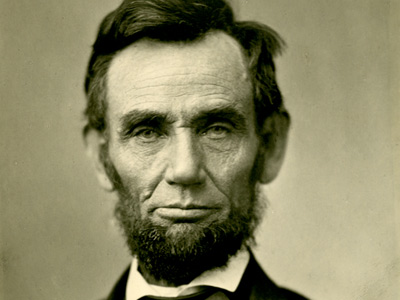
RESOURCES
This article uses material from the Wikipedia article "Abraham Lincoln", which is released under the Creative Commons Attribution-Share-Alike License 3.0.
© Stories Preschool. All Rights Reserved.
